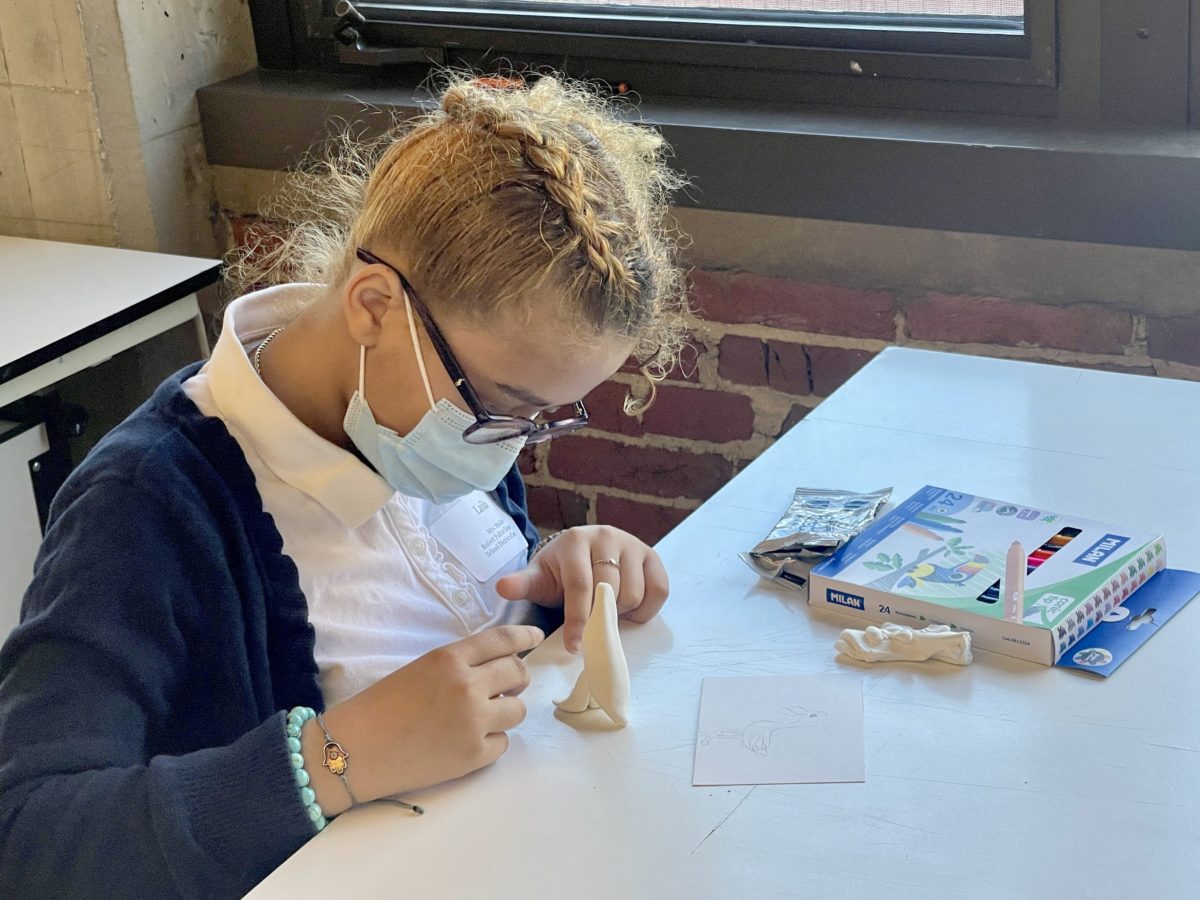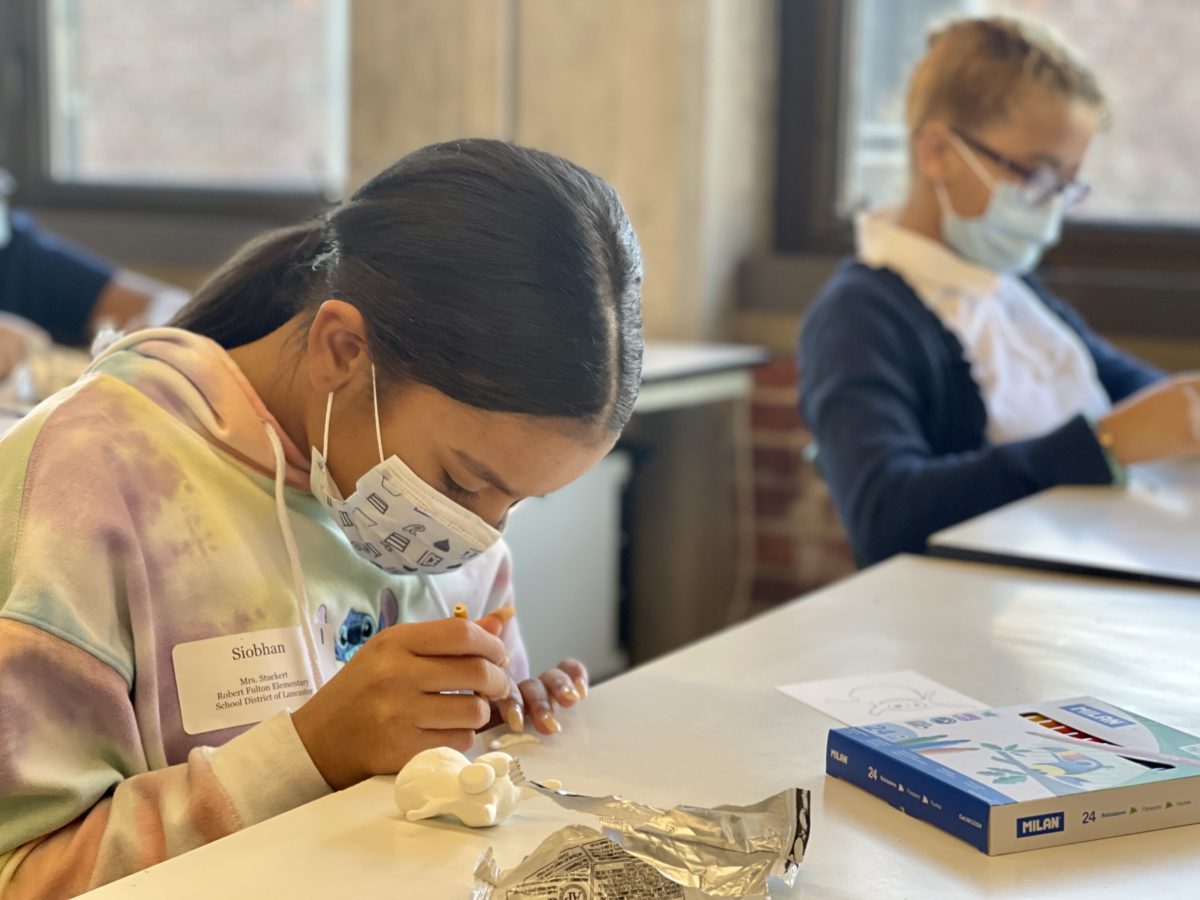
PCA&D and CCE use art to capture interest and motivate young students’ academic achievements
Thursday, April 21st, 2022
Art classes that stretch the imagination of students who already see themselves as creative are rewarding all by themselves.
But art has a deeper impact even than that:
Studies continue to show that taking art classes positively affects student performance in other subjects, too: Math and reading scores are higher for 8th-grade students who reported taking art courses, regardless of race, ethnicity, economics, or gender. Retention rates at the high school level are higher for students engaged in art. And engagement with the arts has a positive effect on a student’s social development, too.
Those studies support the mission of PCA&D as well as its Center for Creative Exploration (CCE). There, in CCE’s community outreach and classes for all ages, students are able to make that connection that art, and a creative mind, link to lots of other things they’re passionate about. Not only that: There are growing careers, and fields of employment, that are looking for those students who have a background in thinking creatively and producing creative work.

A Fulton Elementary 5th-grader works on her character model.
Summer Young Artist, Pre-College CCE classes
The junior high years are often seen as an intense pivot point of a child’s education, with cognitive, social, emotional, and physical development milestones.
So it’s also a sweet spot. Capturing their interest during these years can have a tremendous impact on both social and academic development as their education continues — and interest in specific careers, too.
In a 2021 study commissioned by AICAD, the Association of Independent Colleges of Art and Design, less than two-thirds of respondents reported arts programs were available outside the classroom, in the community. And only about half of middle- and high-school parents reported their students participating in extracurricular arts activities at school.
CCE classes dedicated to those age groups not only provide instruction in the arts that can capture and direct students. They’re also a great resource for early career exploration.
This summer, for example, middle school-age artists may take in-person classes in Intermediate Drawing, Fundamentals of Photography, Fundamentals of Video, or Character Creation for Stories & Comics. Other in-person offerings include Comics With Imagination, Creating Art in Adobe Photoshop, Figure Drawing, Animal & Specimen Drawing, Beginning/Intermediate Painting, Fundamentals of Adobe Illustrator, Peacocks Esports Camp with PCA&D’s competitive esports team, Screen Printing, Urban and Public Art, week-long Young Artist Academies, and Ultimate Art Camp, a collaboration between PCA&D and the Pennsylvania Guild of Craftsmen.
Find detailed calendars of Summer Class sessions for middle schoolers and high schoolers here. Click on your target age group.
High school students, meanwhile, also can find Pre-College classes that target both interests and career exploration, with a dozen classes geared specifically to them. They include everything from Introduction to 3D Animation, Photography: Introduction to the Photobook, Graphic Design and Visual Branding, Storyboarding for Animation, Experiences, & Games, and Creative Writing, to Beginning/Intermediate Figure Drawing, Introduction to Digital Painting, From 2D to 3D: Paper Sculpture and Installation, Photography: Introduction to Lighting, Observational Painting, Concept Art: Evolution & Application, and Painting: Exploration Abstraction.

Salina Almanzar-Oree, CCE’s Program Coordinator, works with a pair of School District of Lancaster 5th-graders as they work on their character models.
Unlocking the questions
On two recent Friday mornings, the halls of PCA&D were filled with artists a bit younger than the usual college-age students: Fifth-graders from Fulton and Carter & MacRae elementary schools in the School District of Lancaster continued PCA&D’s tradition of an immersive morning of creativity with PCA&D staff and degree students. It’s a chance for these young artists to explore the kinds of careers that can be open to them from studying and practicing creativity and the arts.
CCE’s Lascek and Almanzar-Oree directed the annual event, which each year guides a group of SDoL fifth-graders through several projects designed to solve a creative problem over the course of the morning. Starting with a discussion of their favorite cereals — a discussion with some very strong points of view — students then design and draw a cereal box, invent a character/mascot for a new brand of cereal, model it with clay and, finally, take it to the studio to photograph it as part of an “ad campaign.” Some of the photographs then went on display in PCA&D’s Main Gallery next to the work of PCA&D alumnus and Nickelodeon artist Zach Heffelfinger ‘14, whose show Sensical Nonsense was on display.
The project, says Lascek, “has a thread: We’re building something and staying focused, and it hits a bunch of interests. Some students who aren’t as excited about one step of the process may get jazzed by another.”
And it introduces them to skills that can translate into arts and arts-adjacent careers.
They learn what a maquette, or model, is, as they sculpt their character, says Almanzar-Oree, and talking to students about the application, “you can be the dude who sculpts the car,” she says by way of example. “And then it clicks.”
“The day unlocks the questions they didn’t even know they had, and gives them the space to ask,” Almanzar-Oree adds. “You give them a touchpoint — the cereal project – and then find the question or the material that unlocks something” and inspires them.
A Fulton Elementary School counselor who accompanied SDoL fifth-graders on their PCA&D trip said the experience had an impact on her students.
“They were very excited leading up to it, engaged the entire time, and so proud of their artwork afterwards (some bragging happened!),” Mary Sotomayor said in an email. “I loved that students were able to engage with a community partner like PCA&D and even see their artwork on display with their families later on.”
Another school counselor, Amanda Wolf of Carter & MacRae Elementary, agreed.
“Paired with our Future Ready Lancaster curriculum, students continued to gain career, education, and work knowledge through in-person, hands-on learning,” Wolf said in an email. “Students continue to explore the following questions in the context of their own lives: What are my options after high school (college, career, military, etc.)? What is a college? What is a major? What is a career?”

Fulton Elementary 5th-grader Siobhan works with clay during her school’s Creative Careers field trip.
